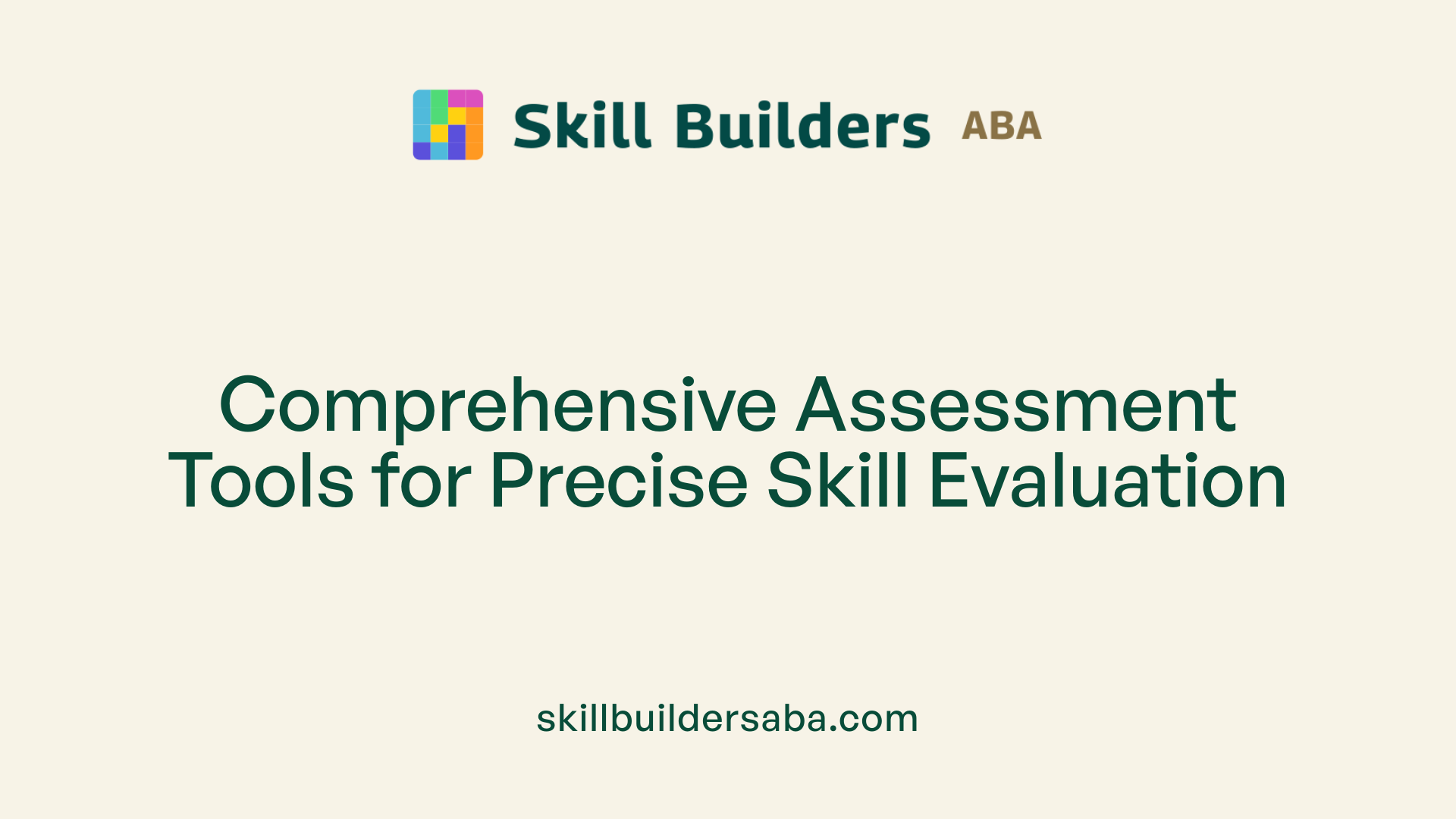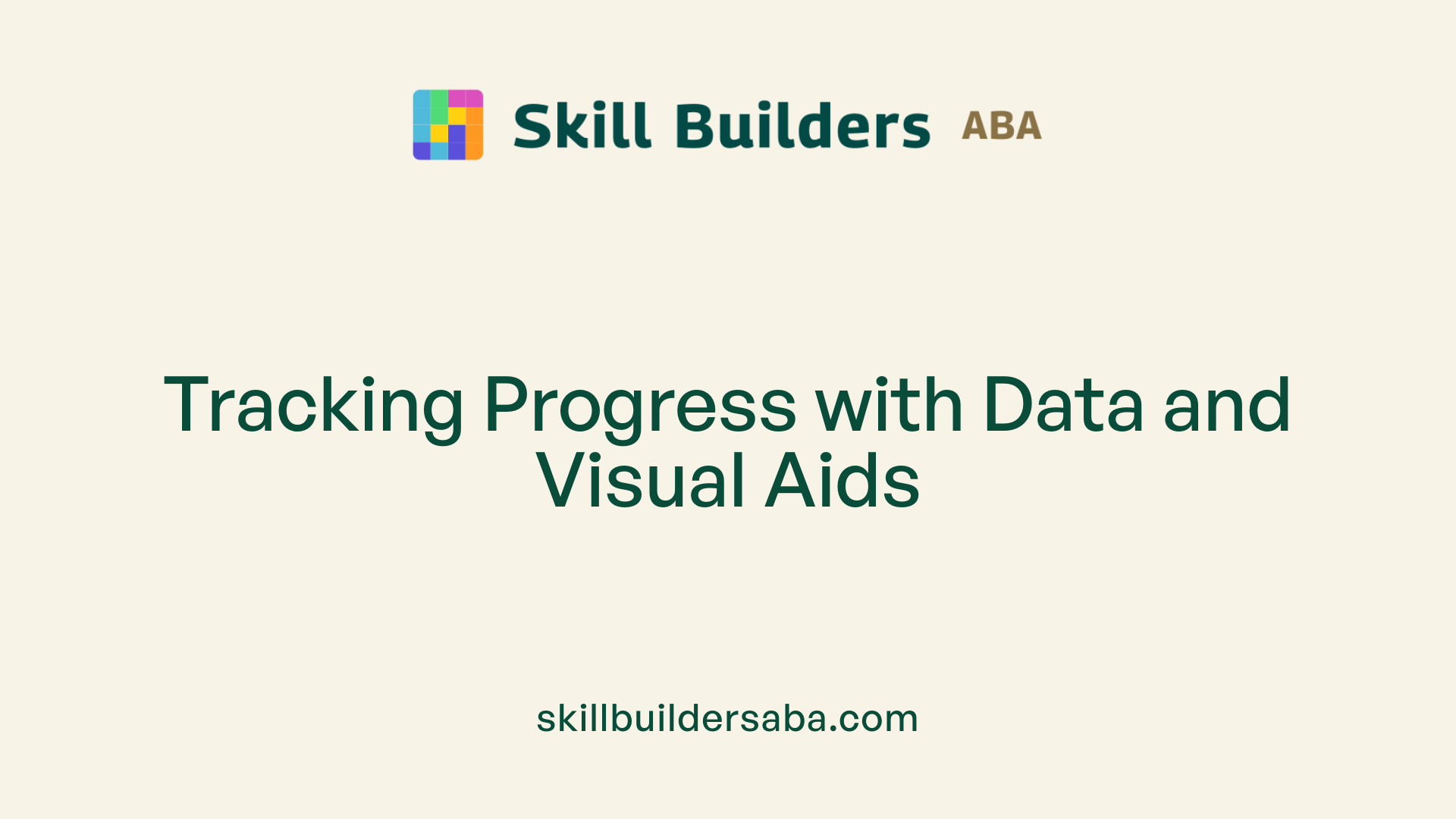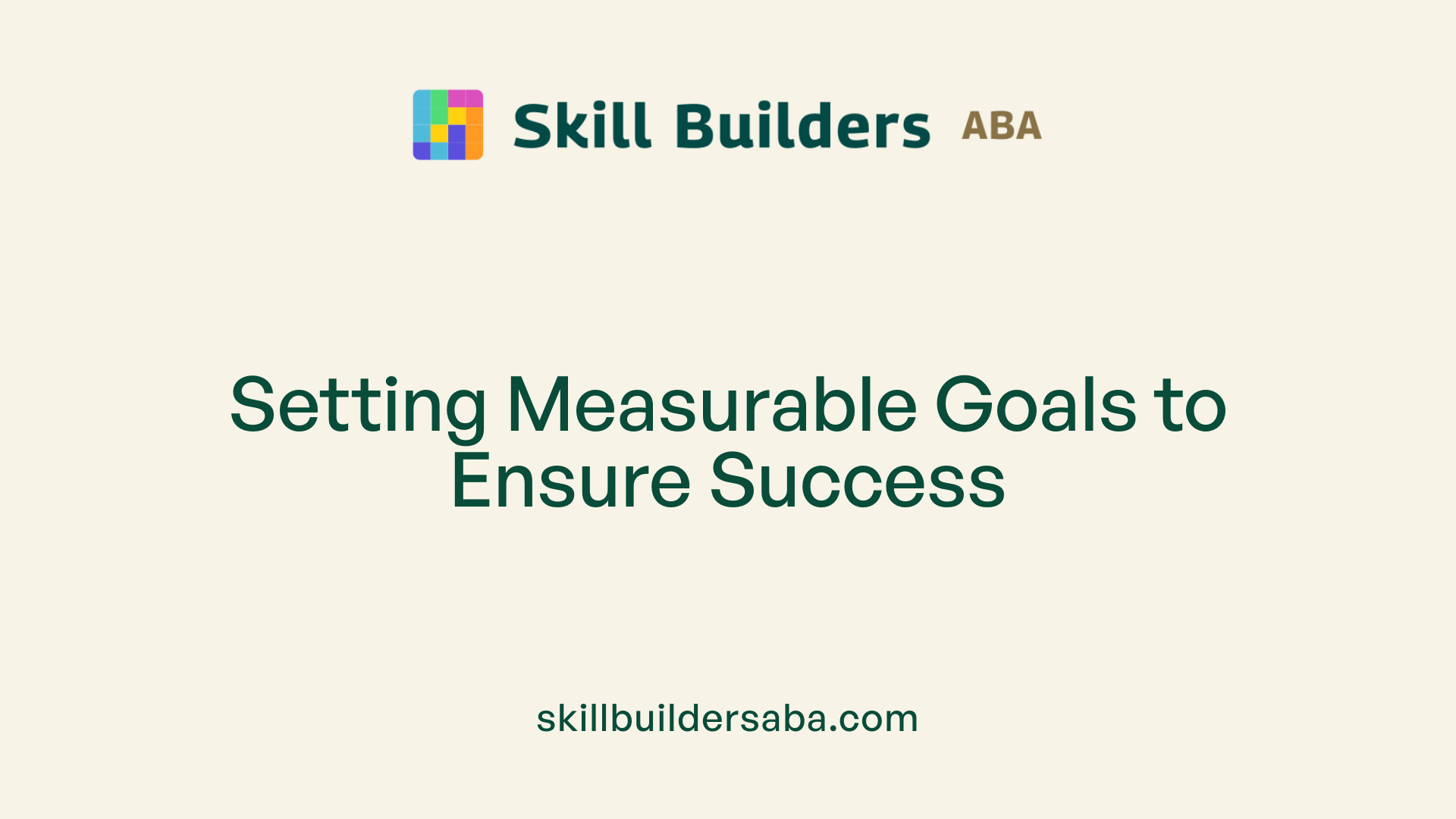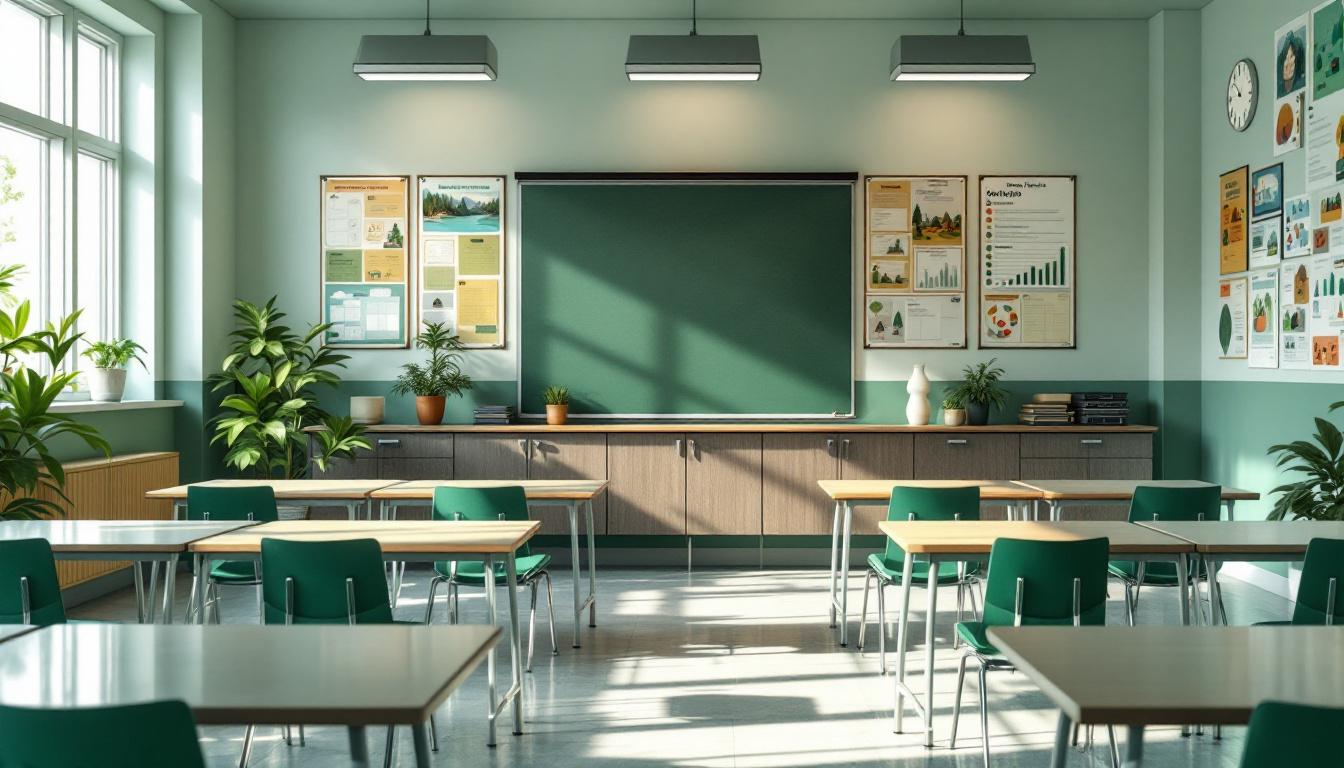How to track skill mastery in ABA therapy
Mastering Progress: Strategies for Monitoring ABA Skill Acquisition

Understanding the Fundamentals of Tracking in ABA Therapy
Effective assessment and tracking of skill mastery are vital components of successful ABA therapy. They enable practitioners, families, and caregivers to measure progress accurately, adjust interventions, and promote meaningful, generalized behaviors. This comprehensive guide explores various methods for assessing skills, tracking data, defining mastery, and evaluating progress in ABA, ensuring a thorough understanding of best practices grounded in current research.
Assessing Skills in ABA Therapy

How do you assess skills in ABA therapy?
ABA therapy employs a variety of standardized tools and assessment methods to gauge a child's developmental progress. Among the most common assessments are the Vineland Adaptive Behavior Scales, ABLLS-R, VB-MAPP, and AFLS. These instruments evaluate crucial areas such as language, social skills, daily living activities, and overall adaptive functioning.
Functional Behavior Assessments (FBAs) are also integral. They help identify the purpose behind specific challenging behaviors, facilitating the development of tailored intervention strategies. By understanding what triggers behaviors and what reinforces them, practitioners can design more effective programs.
In addition to these tools, assessments like PEAK and the EFL focus on measuring cognition, reasoning, and independence. These assessments provide insights into a child's reasoning skills and ability to function autonomously.
Selecting the appropriate evaluation methods is personalized, depending on individual needs and therapy goals. Regular assessments ensure progress is monitored, goals are adapted, and interventions remain targeted.
Types of assessments used in ABA
| Assessment Tool | Focus Area | Purpose | Typical Use | Additional Notes |
|---|---|---|---|---|
| Vineland Scales | Adaptive Behavior | Evaluates communication, daily living, social skills | Baseline and progress measurement | Used for broad developmental profiling |
| ABLLS-R | Basic Skills | Assesses language and academic skills | Planning instructional goals | Suitable for early intervention |
| VB-MAPP | Verbal Behavior | Language, social, and play skills | Tracking progress and skill development | Highly detailed for verbal behavior analysis |
| AFLS | Functional Living Skills | Daily living skills and independence | Goal setting and skill mastery | Focuses on practical life skills |
| PEAK | Cognition & Reasoning | Cognitive abilities and reasoning | Skill acquisition and mastery | Emphasizes critical thinking |
| EFL | Independence Skills | Self-care, safety, and daily routines | Evaluating independence | Suitable for older children |
The importance of comprehensive assessment
Using a combination of these tools provides a holistic view of a child's abilities. It helps monitor progress effectively and guides the development of personalized intervention plans. Regular assessments are crucial for ensuring that goals are aligned with the child's evolving needs and promote meaningful skill acquisition.
Data Collection Methods in ABA
ABA therapy relies on various methods to accurately track a child's progress through behavioral and skill development measures. These include recording metrics such as frequency, duration, and response latency, which provide detailed insights into the child's behaviors during sessions.
To manage situations where continuous recording isn't possible, therapists often use partial interval, whole interval, and momentary time sampling. These approaches help capture a representative snapshot of behaviors over time.
Another vital tool is ABC data collection, which involves recording Antecedents, Behaviors, and Consequences to analyze the triggers and outcomes of specific behaviors. Scatterplot analysis offers visual representations of behaviors across days or times, helping identify patterns and inform intervention adjustments.
Modern technology greatly supports these processes. Software and apps streamline data entry and storage, enabling quick access to progress reports and visual graphs. This technological aid ensures that data collection remains accurate, efficient, and useful in guiding treatment decisions.
How do you track data in ABA therapy?
ABA therapy employs systematic data collection methods including frequency counts, duration, latency, and inter-response time to gather detailed behavioral information. When continuous measurement proves impractical, therapists utilize partial interval, whole interval, and momentary time sampling to capture behavior snapshots. ABC data analysis helps understand triggers and consequences, while scatterplot analysis reveals behavioral patterns over time. Modern technology and software facilitate efficient data collection, supporting data-driven decision-making that adapts interventions effectively.
Defining & Determining Mastery Criteria

How are mastery criteria determined in ABA therapy?
Mastery criteria in ABA therapy are established through the use of specific, measurable standards that define when a child has sufficiently learned a skill. These standards often include performance metrics such as accuracy, independence, and consistency. For example, a common approach is to set a target of 80-100% correct responses or behaviors over multiple sessions or trials.
The criteria are tailored to each child's unique needs and the nature of the skill being taught. For instance, more complex skills may require higher accuracy levels and multiple observations before considered mastered. Practitioners typically assess progress using data collection methods that record the child's responses during therapy sessions.
Research indicates that setting high mastery standards, such as 100% accuracy, can lead to better retention of skills and generalization to different environments or settings. However, in practice, some practitioners opt for slightly lower standards, like 80%, especially when initial mastery is difficult to achieve consistently.
It is crucial that these standards are clearly defined during goal setting and data collection. This ensures consistency in evaluation and provides a clear marker for when to move on to new skills or to reinforce existing ones. The criteria should always consider the child's individual learning pace, the complexity of the skill, and the overall intervention plan.
In summary, mastery criteria are personalized, measurable benchmarks based on accuracy, independence, and performance consistency. Higher standards tend to promote better skill maintenance, but the choice of criteria should balance ambition with realism to support continuous progress.
Examples of Mastery Criteria in Practice
 In ABA therapy, establishing clear mastery criteria is vital for assessing when a child has acquired a skill. One common method involves measuring the percentage of correct responses during trials. For example, a child might be considered to have mastered a skill after achieving 80-90% accuracy over a designated number of sessions. Many practitioners aim for 100% accuracy across multiple sessions, reinforcing consistent performance.
In ABA therapy, establishing clear mastery criteria is vital for assessing when a child has acquired a skill. One common method involves measuring the percentage of correct responses during trials. For example, a child might be considered to have mastered a skill after achieving 80-90% accuracy over a designated number of sessions. Many practitioners aim for 100% accuracy across multiple sessions, reinforcing consistent performance.
Another important criterion is the number of sessions needed to demonstrate mastery. Typically, a child must display high accuracy over several sessions—often across different days—to confirm the skill has been learned reliably. This helps ensure that the acquired behavior is stable and not mediated by chance.
Performance across various settings and with different people is also a crucial part of mastery assessment. Skills should generalize beyond the therapy environment to natural settings like home or school, involving different caregivers or teachers. This guarantees that learned skills are functional and transferable.
| Criterion Type | Typical Standard | Additional Details |
|---|---|---|
| Percentage correct responses | 80-100% accuracy | Higher percentages (like 90-100%) are preferred for mastery |
| Sessions to demonstrate mastery | 3-5 sessions with consistent performance | Ensures stability over time and different contexts |
| Performance across settings | Demonstrated in at least 2-3 different settings | Supports skill generalization and retention |
Regular evaluation of these criteria allows therapists to adapt goals, ensuring that skills are not only acquired but also retained and applied across various parts of a child's life. This approach enhances meaningful learning and long-term independence.
Monitoring Progress in ABA Therapy

How can progress in ABA therapy be checked?
Progress in ABA therapy is primarily gauged through continuous and systematic data collection. Therapists record various metrics such as frequency of behaviors, duration of skills, and response latency. These quantitative data are then analyzed to identify trends and measure improvements over time.
Visual tools like graphs and progress reports are essential in displaying this data clearly. These visual aids help both therapists and families see how a child progresses across different skills and behaviors. Standardized assessments, such as the Vineland-3 or VB-MAPP, also provide benchmarks to evaluate developmental progress and guide subsequent treatment steps.
In addition to numerical data, feedback from parents and caregivers offers invaluable insights into how children perform outside clinical settings. Their observations help ensure that progress is genuine and that skills are generalized to everyday environments. Combining detailed data with visual tracking and stakeholder feedback creates a comprehensive picture, making it easier to adjust interventions and celebrate milestones.
Role of Goal Setting and Evaluation

Setting and evaluating goals related to skill mastery
In ABA therapy, creating clear and measurable goals is fundamental for tracking progress. These goals specify criteria, such as achieving a certain percentage of correct responses during sessions or demonstrating consistent performance across different settings. Establishing precise, attainable targets helps both therapists and caregivers assess whether a child is making progress toward mastery.
Regular data collection and review are vital for evaluating whether goals are being met. Therapists analyze behavioral data and performance trends to determine if adjustments are necessary. This ongoing process ensures that goals stay relevant to the child's current abilities and promote continuous skill development.
Periodic updates and goal adjustment
As children progress, their goals should be revisited and updated regularly. Updating goals involves refining mastery criteria—such as increasing the required accuracy or decreasing support—to challenge the child appropriately. When progress is steady, goals can be made more complex to foster further improvement. On the other hand, if a child struggles, goals may need to be simplified or modified to prevent frustration and promote sustained growth.
Periodic assessments, including standardized tools like VB-MAPP or VB-BAS, help in evaluating the overall skill development and guide necessary adjustments. These updates ensure that therapy remains engaging and aligned with the child's evolving needs.
Ensuring continuous development
Maintaining ongoing growth involves not only setting and updating goals but also ensuring the skills learned are retained and generalized across settings and individuals. Consistent data collection, visual tracking through graphs, and collaboration with caregivers support this process.
Mastery criteria—often requiring high levels of accuracy—serve as benchmarks to confirm skills are well acquired. Many practitioners adopt thresholds like 90% correctness across multiple sessions to ensure permanence. Furthermore, addressing skill generalization across different environments enhances the applicability and durability of learned behaviors.
Regular evaluation and flexible goal management are essential components that foster enduring progress, helping children achieve meaningful, long-lasting improvements.
The Importance of Visual Aids and Motivational Tools
Graphs and schedules
Visual representations like graphs are essential in ABA therapy for tracking a child's progress over time. They provide a clear picture of improvements and setbacks, helping therapists and families to see trends at a glance. Schedules, on the other hand, organize daily routines and help children anticipate activities, reducing anxiety and promoting independence.
Token boards, social stories, and schedules
Token boards serve as immediate reinforcement tools, allowing children to earn tokens for meeting specific goals, which they can exchange for preferred items or activities. Social stories use simple narratives to teach appropriate behaviors and social skills, making expectations clear and relatable. Schedules, whether visual or written, guide children through daily tasks, emphasizing structure and predictability.
Supporting motivation and progress visualization
To motivate children, visual aids combined with reward systems, like token boards, can be highly effective. These tools not only make progress tangible but also encourage ongoing participation. Regularly updating graphs and schedules helps families and therapists celebrate milestones and adjust goals, ensuring steady progress in therapy.
Challenges and Solutions in Progress Tracking
Maintaining Consistency and Teamwork in Data Collection
Accurate progress tracking in ABA therapy depends heavily on consistent data collection practices among all team members. Therapists, parents, and caregivers must work together, using standardized methods like counting occurrences, recording durations, and noting response latencies. Discrepancies in data collection or interpretation can lead to inaccurate assessments of a child's progress.
Teamwork involves regular communication, training, and clear protocols. When all involved understand how to collect and interpret data uniformly, it ensures reliable progress monitoring.
Overcoming Difficulties in Measurement and Data Interpretation
Measuring behaviors and skills in ABA can be challenging, especially when behaviors are infrequent or occur in natural settings. Automated progress reports and systematic data collection techniques help provide objective measurements.
Interpreting data correctly is equally vital. Graphs, charts, and visual aids like token boards or schedules can make data easier to understand and analyze. Regular review meetings with the team support identifying trends, adjusting goals, and ensuring the data reflects true progress.
Importance of Standardized Procedures in Data Collection
Implementing standardized procedures such as using a goal tracking sheet formatted with SMART (Specific, Measurable, Achievable, Relevant, Time-bound) criteria ensures clarity and consistency. These sheets are frequently updated to reflect the child's current abilities and future objectives.
Additionally, employing validated assessment tools like VB-MAPP or ABLLS-R helps to establish baseline skills and set measurable mastery criteria. Consistent use of these tools across sessions ensures that progress is accurately captured and comparable over time.
Solutions Summary
| Challenge | Approach | Benefits |
|---|---|---|
| Variability in data collection | Use standardized procedures | Reliable data to make informed decisions |
| Difficulty in measuring infrequent behaviors | Utilize automated reports and visual aids | Clear, objective data |
| Interpretation inconsistencies | Conduct regular team training and review | Accurate progress analysis |
By committing to these practices, practitioners and families can overcome common challenges, ensuring that progress tracking in ABA therapy is both accurate and meaningful for each child's development.
Research Insights on Skill Maintenance
What are the research findings on mastery and skill retention?
Studies in ABA therapy highlight the importance of setting high standards for skill mastery. Specifically, when children are expected to achieve 90-100% accuracy in targeted behaviors, they are more likely to retain these skills over time and apply them across different settings.
However, a significant concern from the research is that many applied studies do not incorporate or report maintenance probes regularly. Maintenance probes are assessments conducted after mastery to evaluate whether the skill persists without ongoing prompting or reinforcement. Their absence can lead to overestimating a child's actual retention.
Regular and systematic follow-up assessments, including maintenance probes, are crucial. They help therapists and caregivers verify that skills are not only learned but also retained long-term. This ongoing monitoring supports adjustments in intervention strategies, ensuring that positive behaviors are durable and generalize beyond therapy sessions.
In summary, research advocates for higher mastery thresholds and consistent follow-up evaluations to enhance the longevity of learned behaviors in children undergoing ABA therapy.
Integrating Data and Family Collaboration
How can caregiver involvement enhance skill mastery tracking?
Involving caregivers in data collection and progress monitoring significantly boosts the accuracy and comprehensiveness of tracking efforts. Families observe children in natural, everyday settings, offering insights that might not be apparent during structured therapy sessions. This real-world perspective helps in assessing skill generalization and retention more effectively.
Educating caregivers about ABA principles, data collection methods, and behavioral goals empowers them to actively participate in tracking progress. As a result, the data collected is more consistent, and the child benefits from continuous reinforcement of skills at home. Collaborative efforts between therapists and families foster a unified approach, increasing the likelihood that learned skills will be maintained and transferred across different environments.
Moreover, joint tracking and regular communication allow for timely adjustments to intervention plans. This teamwork ensures that progress is thoroughly monitored, and strategies are aligned, leading to more successful and sustained outcomes for the child.
Research indicates that family involvement in progress tracking not only supports skill mastery but also enhances motivation and engagement of the child, creating a supportive environment conducive to growth.
Conclusion: Optimizing Skill Mastery Tracking
Effectively tracking skill mastery in ABA therapy involves a combination of precise data collection, clear criteria, and ongoing assessment. Using measurable goals, such as percentage correct responses, helps define mastery and guides progress. Regularly updating goal sheets and visualizing data through graphs or charts allows therapists and families to see progress clearly. Collaboration among therapists, caregivers, and children’s support teams is essential for gathering comprehensive insights and ensuring skill transfer across environments. Consistent use of standardized assessments like VB-MAPP and continuous evaluation improves the accuracy of progress tracking.
Looking ahead, the future of skill mastery in ABA may include integrating advanced technologies such as automated data collection systems and progress reports. Emphasizing shared goals and ongoing training for caregivers will bolster support beyond therapy sessions. By maintaining a focus on measurement, teamwork, and research-informed practices, practitioners can optimize skill development outcomes for children.
Summarizing the Key to Effective ABA Skill Tracking
Accurate tracking of skill mastery in ABA therapy hinges on a multifaceted approach involving validated assessment tools, systematic data collection, clear mastery criteria, visual progress monitoring, and active collaboration with families. By continuously evaluating and adjusting goals, utilizing research-supported standards, and overcoming common challenges through teamwork and standardized methods, practitioners can foster enduring behavioral change and support long-term success for children.
References
- How to Track Progress in ABA Therapy Through Reports and Parent ...
- What Are Mastery Criteria in ABA? Understanding Their Role in Skill ...
- Mastery Criteria and Maintenance: a Descriptive Analysis of Applied ...
- From Milestones to Mastery: How We Track Your Child's Growth in ...
- Types of ABA Data Collection Methods - Raven Health
- ABA Data Collection Methods: Types and Examples - Motivity
- Effective ABA Data Collection: Tips, Methods & Tools - Artemis ABA
- Streamline Autism & IDD Care with ABA Data Collection Software
.svg)














